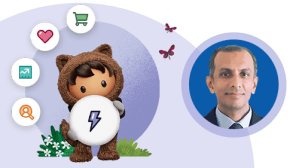The mantra of ‘move fast and break things’ doesn’t work in a trust-based economy where data security and data privacy are critical. Instead, businesses need to find ways to innovate fast without compromising security or building up technical debt.
Fortunately, achieving the right balance is a little easier today. DevOps and Application Lifecycle Management (ALM) provide the guardrails development teams need to move quickly and safely. This includes strong governance and practices like automated testing. Businesses like Singapore Airlines have also established their own best practices to innovate without disruption.
We spoke to Srinivasan Santhanam, Senior Principal Technologist at Singapore Airlines to learn about these and hear how the business keeps up with the demand for new features and digital experiences.
Here’s what we learned.
The right mindset and technical muscle are both keys to agility
Like many businesses during the pandemic, Singapore Airlines had to move fast to reimagine its customer touchpoints. It introduced online meal selection and other mobile services to provide a contactless journey.
Technology teams relied on two key levers to deliver these solutions within a tight timeframe. The first was a change in mindset.
“We didn’t have the luxury to ideate for a long time. So what we did during that time is cultivate a mindset of build-measure-learn. That allowed us to ideate and conceptualise solutions very quickly,” said Santhanam.
The second key lever was the technical muscle to translate these concepts into real-world solutions. Singapore Airlines already had a strong set of development tools and processes. The business had also shifted to cloud and serverless computing for greater agility.
“We had already set the ball rolling on our digital transformation and were leveraging platforms like Salesforce to deliver faster. What we needed to do was accelerate everything to meet customers’ expectations,” said Santhanam.
Barriers to agility highlight the need for good governance
We asked Santhanam about the barriers to delivering change faster. Using the iceberg analogy, he pointed out the visible or common barriers first. The largest barrier is not having the right tools and that’s followed by unsuitable processes.
“Incorrectly modelled processes create a lot of bottlenecks. Also, people are often too eager to automate and automation just makes a bad process worse,” said Santhanam. “People should first take a look at their processes — how they ideate, conceptualise, and deliver. They can then identify what they need to tighten before they automate.”
Other visible barriers include a lack of collaboration and transparency. For teams to move fast, they need to communicate and have visibility into the work created by their colleagues.
The invisible barrier Santhanam pointed out is technical debt. Application development projects often start with a minimum viable product. Then, when developers should be refactoring or restructuring code, they get tasked with new requirements and keep building.
“What happens over time is that a small system change requires significant effort because there are so many undocumented dependencies and much more that you need to test,” said Santhanam.
That’s why applying good governance from the start of application development is so important. On top of that, businesses need a robust DevOps process with high levels of test automation to reduce production defects and downtime. The DevOps process should include an effective branching strategy that allows multiple teams to build and test in parallel using isolated Sandbox environments. In addition, data in these Sandboxes should be anonymised and protected using a solution like Salesforce Data Mask. This will prevent any data leaks and ensure regulatory requirements are met.
New platforms and processes needed for seamless collaboration
While remote and hybrid working is now the norm, Singapore Airlines had to reimagine its ways of working early on in the pandemic. For example, it had to find a way for developers to collaborate and develop solutions in parallel without stepping on one another’s toes.
Sharing their learnings, Santhanam said teams needed secured platforms where they can collaborate and share visibility of their work. They also need training on how best to use these platforms.
“IT teams also need to organise their development processes in a way that makes it easier to collaborate. For example, they need to think about how they manage their source code and how they conduct code reviews,” said Santhanam.
Solving these human challenges is just as important as overcoming the technical barriers to innovating fast.
For more tips on how you can navigate both, watch the webinar ‘Success Anywhere: Innovate Fast. Scale with Confidence. Empower Everyone’.
























